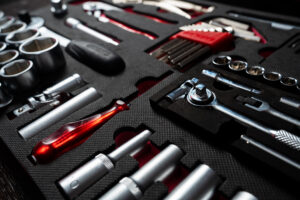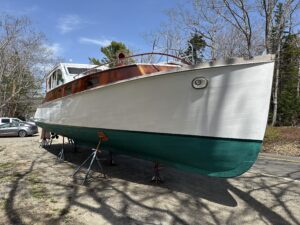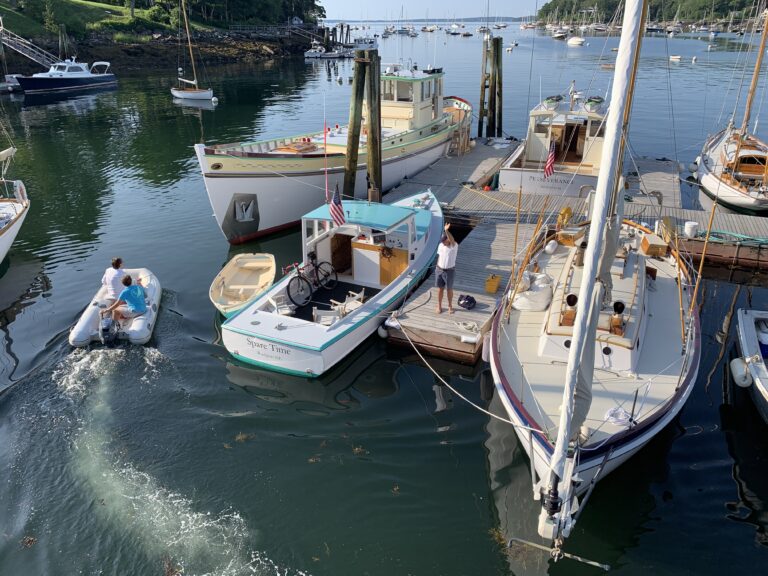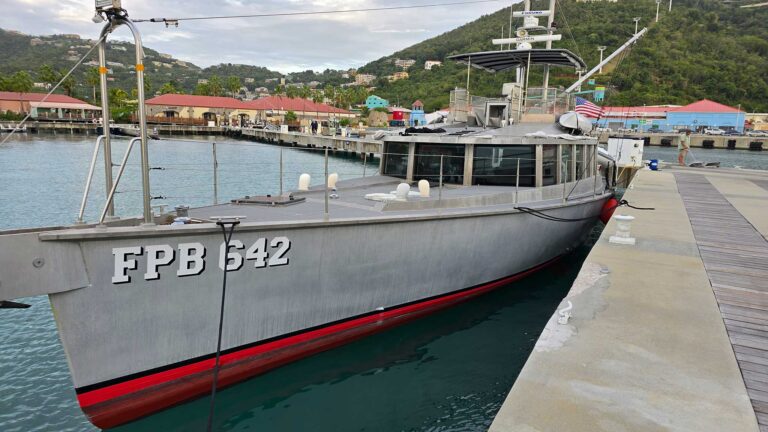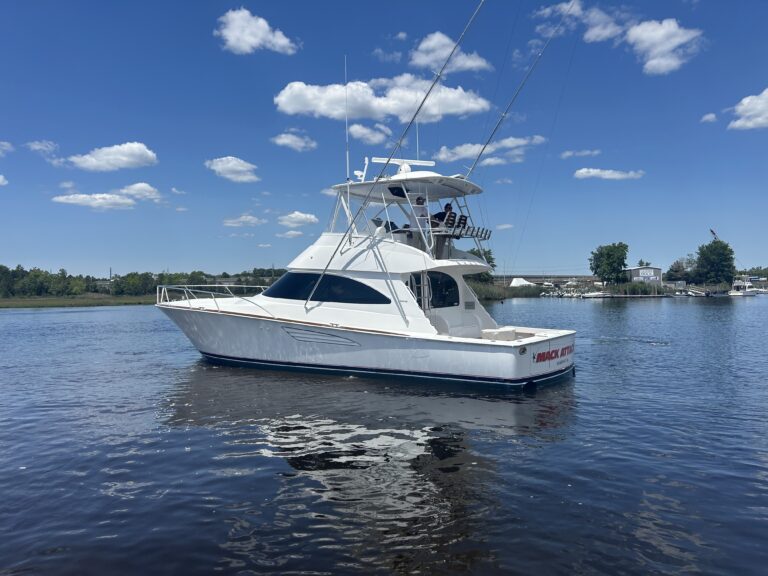I’ve always assumed that Murphy’s Law had to have originated with a boater. After attending Google University, I understand there was an Edward A. Murphy whose name has been associated with the law, and that he was an aerospace engineer. Good grief!

Notwithstanding the irrefutable knowledge of Google U., I still believe he must have been a boater, at least in some former life. Regardless, those of us who have boats know that this law rules at sea, and fixing the things that go wrong is a necessary skill.
I’ve picked up some tricks of the trade over the years, and I like to share them so that people might help me out of my messes with their ideas. These tricks usually fall into the categories of neat tactics and neat products. Here are a few.
Tactics
I’ll begin by bending over, which is always an appropriate position when you have to fix something on a boat. You’re bending over the engine and looking at a bolt to which you have to thread a nut. You have to hold the nut to the threaded end of the bolt and turn the bolt or the nut to get it started. But you can’t do it because your fingers won’t fit into the space, and even if you could you’d probably drop it into the bilge.
Get a box-end wrench that fits the nut. Stick a section of good sticky duct or other sticky tape on one side of the end of the wrench. Wrap it up around the sides so that it’ll be as secure as possible. Avoid putting your fingers on the sticky side that’s going to be in the middle of the opening because you want this to be sticky enough to hold the nut. Make sure the nut is free of grease or oil, then insert the nut into the wrench opening and press it against the sticky side of the tape. Now you can lower the wrench and nut to the threaded end of the bolt and carefully hold it in place, without losing the nut (you hope), as you turn the bolt until the threads lock.
There’s a similar problem when you have to screw a small bolt into a threaded hole in an area that’s too small for your hands — for example, the back of a circuit panel (depowered, of course). How do you get it up to the hole without dropping it? There are inexpensive tools designed for these issues (Google “screw holder” or a similar term), but these aren’t always reliable, and you probably won’t have one on hand. You can also buy screwdrivers with magnetic tips. If the bolt is stainless or bronze, apply extremely viscous grease to the screwdriver and slot. This will usually hold a light bolt until you get it started.
Speaking of duct (and other) tape, we’ve all cursed as we’ve tried to find and free the bitter end that’s stuck to the roll. Next time you finish with the tape, just turn a small part of the end under itself and stick that to the sticky side of the tape. It’ll be easy to see next time, and it won’t stick to the roll. You’ll have to cut off that tuck, but that’s easy.
And speaking of cutting, we’ve all had to cut the end of exhaust and radiator hoses that have wire inserts. Using a hacksaw makes for a quick job, but it’s better to use wire cutters on wire inserts. Grab the wire with pliers and pull it a short distance out of the hose wall. Press the tip of the wire cutter into the end of the hose wall and cut the wire slightly inside the wall. This will keep you from tearing up your hands and fingers on that wire when you have to pull it off the barb again. I learned about the tape end and the wire snubbing from Bryan Geyer, a certified marine engineer who owns The Boat Shop in Lancaster, Virginia, and in my view really knows his stuff, major and minor.

Those are general application tricks, so let’s move to something specific. At some point you’re probably going to have to remove a fine-thread fitting. Even if you’re not hands-on, you may be stuck with the job due to circumstances beyond your control, commonly known as “boating.” Typically it’s on a diesel.
Once you free two such fittings they’re going to be difficult to rethread — particularly, as with diesel fuel pipes, if they’re misaligned. If you’re not careful, you’ll strip those threads and end up spending a lot of money. To get your parts rejoined, don’t try to screw one part to the other. Screw it off the other.
Make sure your surroundings are quiet. Mate the two parts carefully, have the threads touching, press them together gently and unscrew part A from part B as you press it toward part B. Listen closely. When you hear the threads quietly click it’ll mean that they’re just in place to mate; without reorienting the parts, start screwing the fitting on. This is a precise operation, but if you do it carefully it can save a lot of time and perhaps a lot of money.

Neat stuff
I’ve always been amazed by what ordinary “stuff” can do if used with imagination. My old friend Phil Rosch, who lived aboard for a very long time, told me his solution for freeing rusted nuts and bolts. This is the bane (well, one of many banes) of boating. We know about such products as WD-40, Kroil and PB Blaster. Phil, and apparently many others, use a 50/50 mixture of acetone and automatic transmission fluid. He swears by it. And when Phil swears by something, I listen.
He keeps it in a quality plastic bottle with a spray top and shakes it well before using because the ATF will settle out. This, he says, has been tested by different groups with good results. I’m sure if you use it improperly or do something stupid you can get into trouble, but what else is new? Go to Google University, and you’ll see plenty of opinions on this brew.
There are also products that we can buy that make life much easier and safer on boats. These products are often hard to appreciate until you’ve had to use them. Here are a few that have turned me on lately.
A moment ago I spoke of freeing frozen nuts and bolts, a job to make you look for a stick of dynamite if there ever was one. There’s long been another job that gives the same degree of frustration. It’s undoing the job you did years ago with 3M’s 5200 adhesive and comparable products. You use the stuff knowing it’s forever, but you don’t think at the time that you could possibly live long enough for this to matter. Well, I’ve lived long enough, and yes, it matters. But now I use DeBond.
This product is patented and has been around since 1999. I’d never used it because it sounded like one of those things that’s too good to be true. Boy, did I suffer unnecessary grief over those years. DeBond works. It will debond 3M 5200, 4200 and a lot of other bonding material. According to the manufacturer, it has won quite a few converts over the years. After the last two or three jobs I’ve used it on, I’m one of them.
I should stress that it’s important to follow the instructions. I succumbed to my inherent stubborn streak and tried to use my old familiar tactics with the product. You know, the ones that are tried and not true. I found I didn’t need all the brute force, hacksaws, razors, screaming, etc. I just scored the 5200, put on some DeBond, let it sit for a short while and gently popped the fitting (an old porthole ring) off with a putty knife. Other jobs may require other methods, but, as they say, DeBond works.
From saving your fingernails to saving your boat, we move to TideMinders. These are black balls that allow your boat to rise and fall with the tide (even storm tides) in its slip without adjusting the lines. They come in sizes to suit different boats and lines. You string them around the end of your line like large beads, tie two figure-eight knots to hold them in place, and loop them around the piling using a bowline. They roll up and down the piling as the boat moves. They’re extremely tough and heavy enough to absorb strong gusts. The energy of the gust is absorbed by the balls as they roll up the piling in reaction to the wind. The holes in the balls through which your line passes are smooth so as to avoid chafe, which you’d have plenty of if your lines were bare against the piling.
I’ve used these for years and in severe weather. I consider them invaluable. They don’t involve putting holes in pilings, which can weaken them, or using rods or other attachments, which may not be as strong as the piling. Your boat is held by the undiminished strength of its pilings. And TideMinders float when I drop them over. I check for line chafe by slightly pulling the balls apart to look but have never found any.

The last product that I’ll mention here is Chafe-Pro. I did a lengthy article for Soundings on storm preparation a few years ago, which included a discussion of chafe gear. Since then I’ve learned about this product.
The Coast Guard has used Chafe-Pro for years, and now it’s being marketed to boaters. Yes, I know you can make chafing gear for your lines with towels, old rugs, bluejeans, etc. I’ve been doing that for years. I’ve also been trying to move these materials back into place or away from the spot where they wore through for years. And some things, such as the old favorite fire hose, I’ve found may do more harm than good because they don’t let water through, and the line, sliding back and forth inside, gets hot and frayed.
Chafe-Pro stays in place on the line, is UV-resistant, according to the company, and you can get it in different sizes and grades. (I prefer “Barracuda.”) You can also put it on without untying the line. When lines chafe in a storm, you can’t just go out and put on another piece of rag or change the line. And odds are that you’ll damage your boat and others, not to mention the dock, if your line chafes through. With TideMinders and Chafe-Pro properly installed, you can breathe easier when the blows come.
I’ll share other tricks and products from time to time, and if you’ve found a great idea, please let me know. If we’re going to stymie Mr. Murphy, we need all the help we can get.
This article originally appeared in the November 2015 issue.



